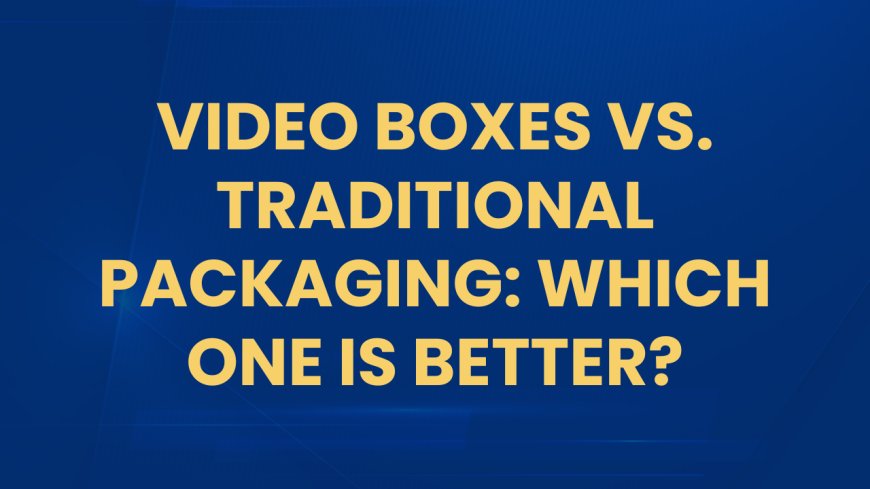Video Boxes vs. Traditional Packaging: Which One is Better?
Video boxes offer interactive appeal, while traditional packaging provides cost-effective reliability. Compare both options and choose what suits your brand best.

In today’s competitive market, packaging plays a key role in branding, customer engagement, and purchase decisions. Traditional packaging has long been a reliable choice, offering simplicity and cost-effectiveness. However, video boxes have emerged as a game-changing innovation, providing an immersive and interactive experience for consumers.
So, which packaging option is superior? In this blog, we’ll compare video boxes vs. traditional packaging based on customer engagement, cost, brand impact, and versatility.
Understanding Video Boxes and Traditional Packaging
What Are Video Boxes?
Video boxes are high-end packaging solutions embedded with an LCD screen that plays a pre-loaded video upon opening. These are commonly used for luxury products, corporate gifting, promotional campaigns, and brand launches. The inclusion of video content enhances customer engagement and makes the packaging experience memorable.
What Is Traditional Packaging?
Traditional packaging includes conventional materials like cardboard boxes, plastic wraps, and paper bags used to protect and showcase products. These packages rely on printed graphics, text, and structure to communicate a brand’s message.
While traditional packaging is practical and budget-friendly, it lacks the interactive and emotional appeal of video boxes.
Key Comparisons: Video Boxes vs. Traditional Packaging
1. Customer Engagement
- Video Boxes: Provide a multi-sensory experience with video and audio, instantly capturing consumer attention.
- Traditional Packaging: Uses static design elements like text and images, which may not create a lasting impression.
Winner: Video Boxes – They offer a more engaging and interactive experience.
2. Brand Impact and Memorability
- Video Boxes: Deliver dynamic storytelling, reinforcing brand recall.
- Traditional Packaging: Offers consistent branding but lacks interactive appeal.
Winner: Video Boxes – They enhance the unboxing experience and strengthen brand recognition.
3. Customization and Versatility
- Video Boxes: Allow for customized video messages, product demonstrations, and storytelling.
- Traditional Packaging: Can be personalized with different materials, colors, and prints but lacks multimedia features.
Winner: Video Boxes – They provide greater customization options with video integration.
4. Cost Considerations
- Video Boxes: More expensive due to electronic components and video screens.
- Traditional Packaging: More cost-effective and scalable for mass production.
Winner: Traditional Packaging – A budget-friendly choice for most businesses.
5. Sustainability and Environmental Impact
- Video Boxes: Contain electronic components that are harder to recycle.
- Traditional Packaging: Can be made from biodegradable and recyclable materials for a smaller environmental footprint.
Winner: Traditional Packaging – It’s the more eco-friendly option.
6. Consumer Perception and Experience
- Video Boxes: Create an exclusive, luxury experience that makes customers feel special.
- Traditional Packaging: Offers a familiar, practical unboxing experience.
When Should You Use Video Boxes?
Video boxes are ideal for:
- Luxury and premium brands such as jewelry, high-end electronics, and designer items.
- Corporate gifts where personalized videos add emotional value.
- Product launches and promotions showcasing product features through video.
- Marketing campaigns, including influencer and PR packages with engaging content.
When Is Traditional Packaging Better?
Traditional packaging is suitable for:
- Mass-market retail where affordability and scalability are essential.
- Eco-conscious brands that prioritize sustainability initiatives.
- Basic packaging needs where visual appeal is sufficient.
- Budget-sensitive businesses seeking lower production costs.
What's Your Reaction?
























